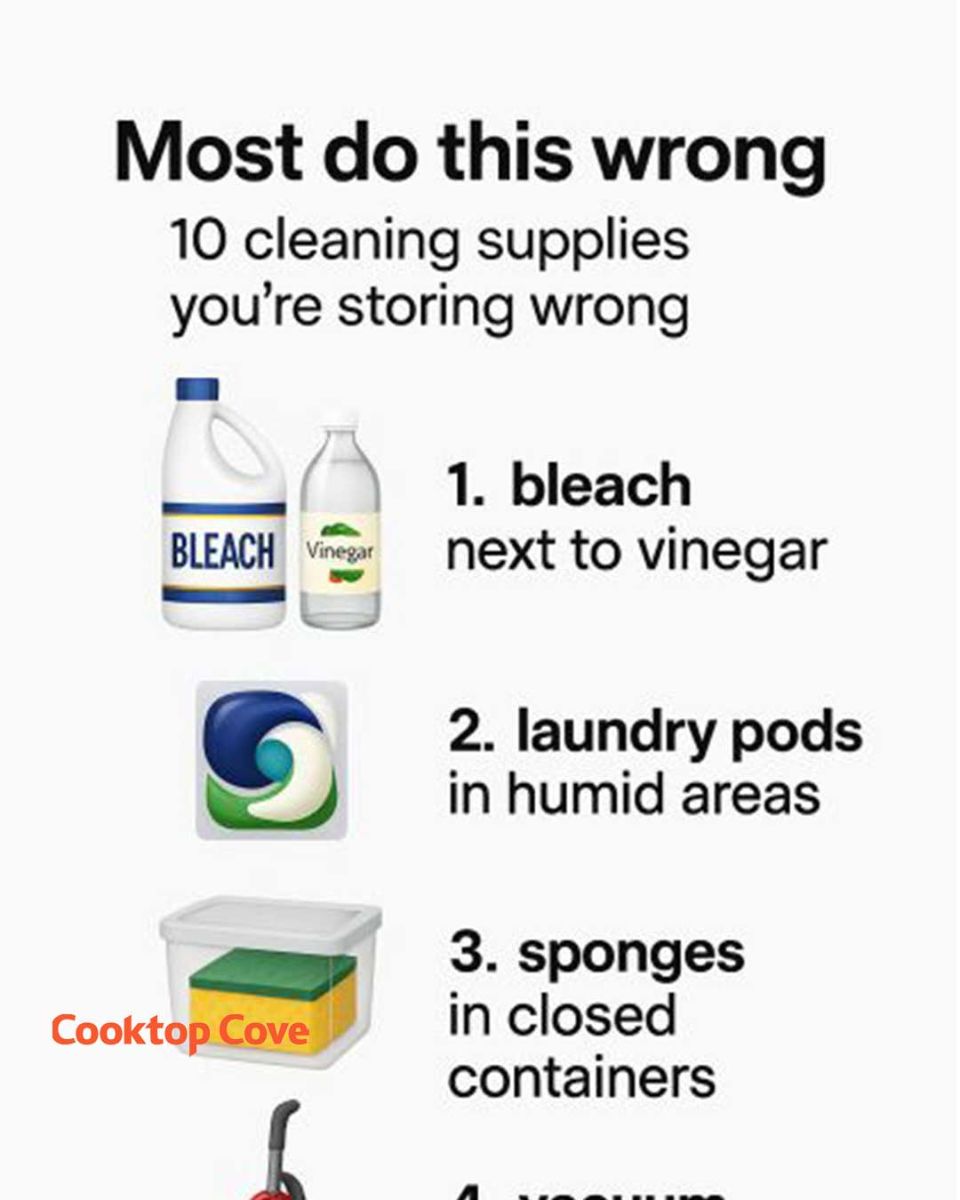Cleaning our homes is an essential routine that ensures a healthy and pleasant living environment. However, the way we store our cleaning supplies can significantly impact their effectiveness and safety. Many of us unknowingly make common mistakes when it comes to storage, which can lead to decreased efficacy, hazardous situations, or even damage to the products themselves.
In this article, we will explore ten common cleaning supplies storage mistakes that most people make. By understanding these errors, you can better organize your cleaning arsenal to ensure safety and maintain the effectiveness of your cleaning products. From hazardous chemical combinations to the growth of bacteria, let's dive into the details of how to properly store your cleaning supplies.
Advertisement
1. Bleach and Vinegar: A Dangerous Combination
Bleach and vinegar are both powerful cleaning agents, but they should never be stored or used together. When combined, they create chlorine gas, a toxic substance that can cause respiratory issues, skin irritation, and eye damage. It's crucial to store these products separately and in well-ventilated areas to prevent accidental mixing.
For example, if you store bleach in a laundry room, ensure that vinegar is kept in a completely different location, such as a kitchen cabinet. Always label cleaning supplies clearly and educate all household members about the dangers of mixing these chemicals.
2. Storing Laundry Pods in Humid Areas
Laundry pods are convenient but can be problematic if stored in humid environments. The moisture can cause the pods to dissolve or stick together, rendering them unusable. To prevent this, store laundry pods in a dry, cool place, ideally in an airtight container.
Avoid placing them near washing machines or in bathrooms where humidity levels are high. Instead, opt for a location like a bedroom closet or a pantry shelf that maintains a stable environment.
3. Sponges in Closed Containers: A Recipe for Bacteria
Storing sponges in closed containers traps moisture, creating an ideal breeding ground for bacteria and mold. Sponges should be allowed to dry completely between uses to maintain hygiene.
After using a sponge, rinse it thoroughly and place it in a well-ventilated holder or on a rack that allows for air circulation. Avoid leaving sponges soaking in water or sealed away, as this encourages bacterial growth.
4. The Vacuum Cleaner in a Damp Basement
Vacuum cleaners are often stored in basements, but damp environments can damage the electrical components and promote mold growth within the vacuum's dust compartment. It's best to store vacuum cleaners in dry, temperature-controlled areas.
If basement storage is unavoidable, consider using a dehumidifier to reduce moisture levels. Regularly check and clean the vacuum's filters and dust compartments to prevent mold and mildew buildup.
5. Paper Towels in the Bathroom: A Moisture Problem
Storing paper towels in bathrooms might seem convenient, but the high humidity can cause them to absorb moisture, making them less effective. Moist paper towels can become a breeding ground for bacteria and are less absorbent when needed.
Instead, store paper towels in a dry kitchen cabinet or pantry. If you must keep them in the bathroom, consider using a covered dispenser to protect them from moisture.
6. Cleaning Sprays Near Heat Sources
Many cleaning sprays contain flammable chemicals and should be kept away from heat sources like stoves, radiators, and direct sunlight. Heat can cause the bottles to expand and potentially leak or even explode.
Store cleaning sprays in a cool, dry cupboard or closet, away from any heat-producing appliances. Ensure that the storage area is well-ventilated to minimize any risk of fume buildup.
7. Mops and Brooms in Tight Spaces
Mops and brooms often get crammed into tight spaces, which can cause damage to their bristles and fibers, reducing their cleaning effectiveness. Additionally, storing mops upright without proper drying can lead to mold growth.
Designate a specific area with adequate space for mops and brooms, preferably with hooks or racks that allow them to hang and air-dry between uses. This will prolong their lifespan and maintain their functionality.
8. Storing Baking Soda Near Odorous Products
Baking soda is excellent for absorbing odors, but storing it near strong-smelling products can lead to it becoming saturated with those odors, reducing its effectiveness. Keep baking soda away from items like onions, garlic, or scented cleaning products.
Seal baking soda boxes or transfer the contents to airtight containers, placing them in a pantry or cupboard away from any potential odor sources. This ensures it remains fresh and ready to use for both baking and cleaning purposes.
9. Misplacing Microfiber Cloths
Microfiber cloths are valuable cleaning tools due to their ability to trap dust and dirt, but storing them incorrectly can diminish their effectiveness. Avoid keeping them in dusty or dirty areas where they can accumulate debris.
Wash microfiber cloths separately from other fabrics to prevent lint transfer and store them in a clean, dry drawer or container. This will keep them ready for use and maintain their dust-trapping capabilities.
10. Toilet Brushes in Enclosed Spaces
Toilet brushes are often stored in enclosed holders, which can trap moisture and create a breeding ground for bacteria. Proper ventilation is key to preventing this issue.
After use, allow the toilet brush to drain and dry completely before placing it back into a holder. Consider using holders with ventilation holes or open designs that promote airflow, reducing the risk of bacterial growth.
11. Metal Cleaners in Humid Environments
Metal cleaners are prone to degradation when exposed to humidity, which can lead to reduced effectiveness and potential corrosion of the containers. Always store metal cleaners in dry, stable environments.
Advertisement
Avoid storing them under sinks or in garages where humidity levels can fluctuate. Instead, opt for a climate-controlled area such as a hall closet or laundry room shelf that maintains a consistent temperature and humidity level.

